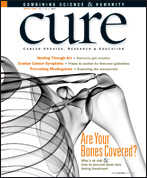Publication
Article
CURE
Ordinary Miracles: Learning from Breast Cancer Survivors
Author(s):
The book includes case studies, personal survivor stories and information from physicians and survivors.
Every month I receive books to review. Some are by cancer survivors, others by doctors who want to impart their wisdom about what patients should do. The decision to review a book is usually based on whether it provides something unique to our readers. To determine that, I begin by reading the introduction—where the author explains the how and why of the book. When I read the introduction of Ordinary Miracles: Learning from Breast Cancer Survivors, I knew I would review the book.
S. David Nathanson, MD, a surgical oncologist and director of Breast Care Services at Henry Ford Health System in Detroit, won me over with two statements. First, he was prompted to write the book by a patient who wanted him to help women cope with their diagnoses by sharing how other patients had coped. Then, he invited the patient, Sally Cole-Saul, to help him develop the format, which explores the common journey every patient travels.
He chose to tell stories from the patient’s perspective because “99 percent of breast cancer patients are women, and men cannot interpret, evaluate, or even truly understand the emotions and feelings of women who are treated for breast cancer,” he says in the book. I like that he gets it. I like that he wants to do feelings.
The book includes case studies, a formal name for women telling their own stories, each of which has similar headings, such as “A Bump in the Road of Life,” “A Life Beyond Cancer,” “Hope—Again.” The case studies are blended in with the other chapters (Detection, Diagnosis, Surgery, Chemotherapy, Radiation, Support Systems, The Spiritual Connection, Afterward, and Advice).
Everywhere, the information is provided by the women, whether in the case studies or in the other chapters where numerous women comment on the particular subject. They talk about fear, anger, pain, joy, and relief—feelings common to all women with breast cancer.
Dr. Nathanson did an admirable job gathering all the information together, although the book needs more variety in the voices. The case studies, of necessity, are women who were articulate and educated enough to respond in detail to the questionnaire he sent out, suggesting overrepresentation of women from a certain socioeconomic group.
But in the end, we need more books where women talk about feelings. Mostly we all go through the same protocols, choose from the same menu. But the emotional and social circumstances vary with every woman.
However, I have one more issue with the book—its price tag of $49.95, which is uncommonly high. Amazon.com has a few discounted to $34, which is still unaffordable for many women who need it. I’ll be donating our review copy to a local support library.






